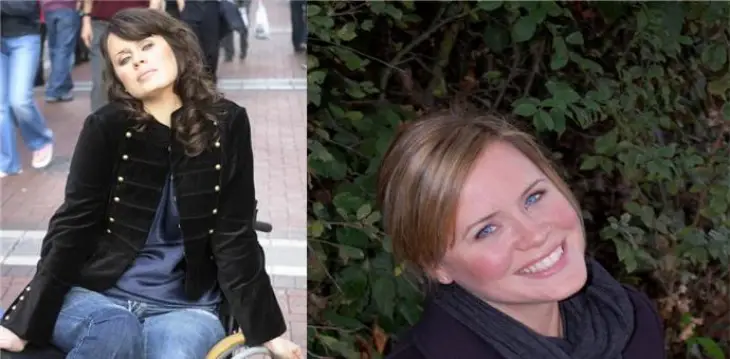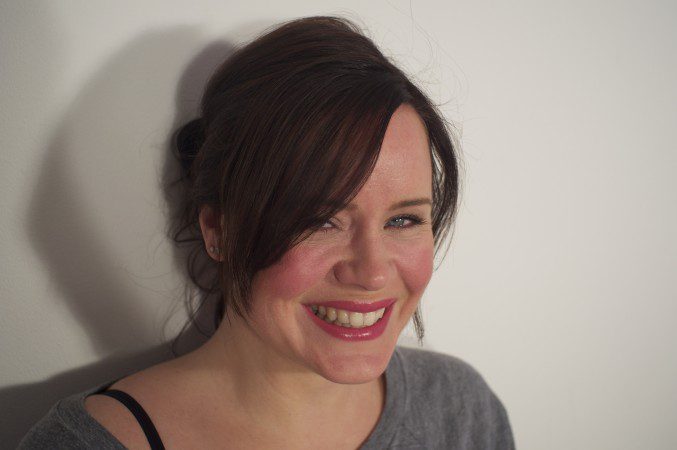
The Model Interview: Q&A with Shannon Murray
Shannon Murray is a model, actress, writer and TV presenter from the UK who has trailblazed the way forward in raising the profile of disabled people in mainstream media. Last year, Shannon was chosen to become the first disabled person to model for Debenhams, the national department store. Shannon kindly took some time out of her schedule to have a Q&A session with Disability Horizons about her career to date, her outlook on the world and what the future may hold.
Can you please tell the DH readers a bit about your younger days and your disability?
I grew up in London and I acquired my disability at the age of 14. I broke my neck in a diving accident which left me paralysed from the chest down. It affected my life, but not in the way that people often assume. I didn’t sit around crying for years, I appreciated that it could have been much worse and that I was fairly lucky with my injuries. I got up and got on with life. I’ve always looked for the positive – I’d have made a great spin doctor!
Another key, and sometimes tricky time of life, are the teen years. Do you have any overarching thoughts or funny anecdotes?
Disability and teen years are complex, teenagers are incredibly image and self conscious and I think even more so if you are physically different in any way. Learn to accept your reflection in the mirror, look for the parts of you that are the same and become used to the parts that are now different. Don’t use clothes to hide yourself – overdress for everything! You have to accept that you’re likely to be stared at quite a bit, at least give them something to stare at and at the same time boost your own self esteem. Figure out what you like most about your body and work to emphasise that, whether it’s your eyes, lips, cleavage, small waist, slim legs, strong arms, soft skin, manicured hands, etc.
My biggest piece of advice is to learn to be cool talking about your disability, because it’s inescapable. Even complete strangers are always going to be curious and ask why you have a disability. Rather than seeing it as rude or overly personal, see it as an icebreaker and an opportunity to educate someone about disability – so many people get their knickers in a twist being asked about their disability. Obviously, if the person is being rude I have a completely different response varying from “I thought I could fly” to “what is disability?” or “I just don’t like walking”.
How did you get into modelling?
It wasn’t intentional. Prior to my accident I had always wanted to be an actress. I attended the Anna Scher drama school from the age of eight up until my accident. Then in 1994 my friends entered me into a modelling competition advertised in The Sun, which I won and was given a contract with the VisABLE People Agency. I’ve been modelling, acting and presenting ever since then.
What is your view on disabled models portrayal in the media?
What portrayal in the media? It’s practically non-existent! Only recently have we started to see disabled characters in long running drama series, but there is still much room for improvement and advertising is still lagging behind.
The model Aimee Mullins and the actress Marlee Matlin have done great work in the US but even there it’s still rare to see positive portrayal of disability in the media. I challenge people to name a person or performer with a disability who are a household name amongst able bodied people (not a Paralympic athlete, Stevie Wonder or Prof Stephen Hawking please!).
Please tell us about the Debenhams project.
Last year I became the first disabled model to feature in a high street advertising campaign for a mainstream fashion store. This was as a result of the work I did with Gok Wan on How to Look Good Naked. They held a casting to select a model to represent them and I was selected. I had been modelling professionally for 16 years so I can assure you it wasn’t an overnight success, it took a long time to get into those high street windows!
Do you think having specific shows finding disabled models educated the public more on disability?
I think they bring attention to disability in fashion but I don’t think they change perception, I think it’s much more important for disability to appear in magazines and advertising. I’ve only ever appeared in two fashion shows, because personally I don’t feel comfortable parading down the runway in a wheelchair. Who actually goes to a fashion show? You’re not reaching very many people in that forum. You reach a much larger audience through magazine and television advertising and therefore stand a better chance of educating people.
What was the funniest moment in your career?
Trying to film a scene that required awkward camera angles, the only way to capture it was to perch my chair on top of two large flight cases. The more I giggled at the insanity of it, the more my chair wobbled. But at least we got the shot!
Your favourite band?
Love a bit of Beyoncé.
Your favourite sport?
To do: swimming. To watch: football or tennis.
Which actors would you most like to work with?
Sean Penn; George Clooney; Michael Gambon and Paddy Considine.
Did using a wheelchair ever cause problems/difficulties on stage?
No, whether it’s for acting or modelling the crew have always been incredibly accommodating, even when access hasn’t been great we’ve always worked out the logistics somehow. You have to be adaptable to lots of different situations in the industry.
Out of all the films you have seen, which character would you have most liked to portray?
Scarlet O’Hara from Gone with the Wind.
Any particular tips for budding/aspiring young disabled models?
Be realistic. I have always known that I’m not going to be the next Christy Turlington. Always have a backup job, as there simply isn’t enough work to make a comfortable living.
Be prepared for rejection, to travel a lot (UK, not exotic climes!) to start early and work very long hours and most essentially to know the importance of team work! It takes a lot of people to make a great photograph!
Have you run anybody famous’ foot over?
Robbie Williams, seconds before he was due to run on stage and host the MTV European Music Awards.
What’s your idea of a perfect Friday night?
Dinner, wine, DVD at home with my boyfriend.
What was the most embarrassing moment in your career?
Probably filming a nude scene for the Stephen Poliakoff BBC1 drama Friends & Crocodiles; filming it wasn’t too bad, as it was a closed set and I had another actress in the pool with me, so we giggled our blushes away. But the night it was broadcast was more embarrassing, there is nothing quite like knowing over 5 million people have just seen your breasts! I received quite a lot of text messages that night!
Did you use, or know of, any modelling companies for disabled people?
The only agency with disabled models that I’m aware of is the one I am with, VisABLE People.
What is your ideal Sunday afternoon?
Walking my dog in the park on a chilly autumnal day; followed by dinner with friends at a local pub with a log fire burning.
Tell us what you have been up to recently
I have been working with an organisation called Body Gossip to improve body image, I’ve had two visits to 10 Downing St already this year and last week I finished filming an episode of Casualty, should be on television in January 2012. I’m trying to move away from the modelling and towards my real passion; acting and broadcasting. I’m also writing a lot more. You can read a few examples on my blog: www.shannonmurray.wordpress.com
What is your dream holiday?
Somewhere hot with a private villa with a pool, friends and family.
What does the future hold?
Let me check my crystal ball and get back to you!
Shannon, on behalf of DH, thank you so much for your time and all the best with everything!
The featured image (left) taken by Sarah Doyle. The featured image (right) taken by Aran Patrick
